![]()
![]()
![]()
Use LEFT and RIGHT arrow keys to navigate between flashcards;
Use UP and DOWN arrow keys to flip the card;
H to show hint;
A reads text to speech;
50 Cards in this Set
- Front
- Back
|
A _____ quantity is one that has magnitude only.
|
scalar
|
|
|
A ____ quantity is one that has magnitude and direction.
|
vector
|
|
|
A good example of a scalar quantity is s________.
|
speed
|
|
|
A good example of a vector quantity is v_________.
|
velocity
|
|
|
The "how much" component of a vector is called the _____
|
magnitude
|
|
|
The "which way" component of a vector is the _____.
|
direction
|
|
|
When you add two or more vectors, the magnitude and direction that you end with is called the _______.
|
resultant
|
|
|
Equal but 180 degrees opposite to a resultant vector is an _____ vector
|
equilibrant
|
|
|
If a resultant vector is 45 newtons at 30 degrees, then the equilibrant is _____ newtons at _____ degrees.
|
45 newtons
210 degrees |
|
|
A vector can be broken down into ____ and _____ components.
|
vertical
horizontal |
|
|
What can be done with all the vertical and horizontal components of several vectors?
|
You can add all the verticals to get the overall vertical component and...
You can add all the horizontals to get the overall horizontal component. |
|
|
When you have an overall horizontal and overall vertical component, what can you then calculate?
|
the resultant of all the vectors
|
|
|
Given an overall horizontal component and a vertical component, what operation do you need to do to get the magnitude of the resultant?
|
Use the Pythagorean theorem
|
|
|
Which trig function must be used to get the vertical component of a vector?
|
sine function
|
|
|
Which trig function must be used to get the horizontal component of a vector?
|
the cosine function
|
|
|
Which trig function must be used to get the angle of the resultant from an overall vertical and overall horizontal vector?
|
the tangent function
|
|
|
To get the angle for a resultant, you take the inv tan of.....
|
vertical over horizontal
(That's vert divided by hor) |
|
|
Vectors that act 90 degrees to each other are _______ of each other.
|
independent
|
|
|
Vectors that act only east & west can merely be ____ together, with east being ___ and west being ___.
|
added
positive negative |
|
|
Vectors that act north and south can merely be ___ together, with north being ___ and south being ___.
|
added
positive negative |
|
|
What is the resultant of a vector 10 km east + a vector 10 km north?
|
square root of 200
at 45 degrees |
|
|
What is the resultant of a vector 5 km west + a vector 5 km south?
|
square root of 50
at 225 degrees (or 45 degrees south of west) |
|
|
What is the resultant of a vector 8 m/s south + a vector 8 m/s east?
|
square root of 128
at 315 degrees (or 45 degrees east of south) |
|
|
If your resultant is in quadrant III and is 15 degrees, then what are the degrees on a 360 scale?
|
195 degrees
|
|
|
If you have a resultant in quadrant III with negative 30 degrees, then what is the number of degrees on a 360 scale?
|
240 degrees
(that's 270 minus 30 degrees) |
|
|
If you have a resultant vector in quadrant IV with a 20 degree angle, then what is the number of degrees on a 360 scale?
|
290 degrees
(that's 270 plus 20 degrees) |
|
|
If you have a resultant vector in quadrant IV with negative 20 degrees, then what is the number of degrees on a 360 scale?
|
340 degrees
(that's 360 minus 20 degrees) |
|
|
The _____ of a vector arrow is proportional to the magnitude of the vector.
|
length
|
|
|
If you add 2 vectors together, you get the resultant by connecting the ____ point with the _____ point.
|
origin
ending |
|
|
An easy way to get an estimated resultant of just 2 vectors added together is the _________ method
|
parallelogram
|
|
|
An easy way to add multiple vectors to get a resultant is called the ____ _____ _____ method.
|
tip-to-tail
|
|
|
What resultant will you get if you add vectors A + B + C as opposed to B + C + A?
|
the same thing
(Order of addition doesn't matter.) |
|

What is the resultant of these two vectors?
|

|
|
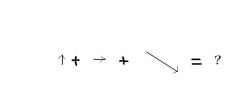
What is the resultant vector of these 3 vectors added?
|

|
|
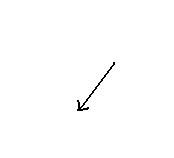
What is the vertical component of this vector?
|

|
|
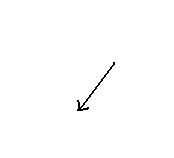
What is the horizontal component of this vector?
|

|
|
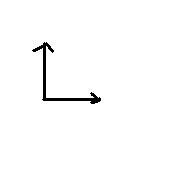
What is the equilibrant of these 2 vectors?
|

|
|
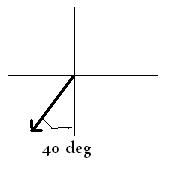
What would this vector's angle be on a 360 degree scale?
|
230 degrees
|
|
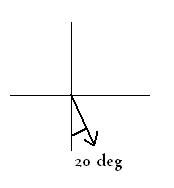
What would this vector's angle be on a 360 degree scale?
|
290 degrees
|
|
|
What's the vertical and horizontal components of 2 m/s North?
|
V = 2 m/s
H = 0 m/s |
|
|
What's the Vertical and Horizontal components of 3 m/s South?
|
V = -3 m/s
H = 0 m/s |
|
|
What's the vertical and horizontal components of 4 m/s West?
|
V = 0 m/s
H = -4 m/s |
|
|
What's the vertical and horizontal components of 5 m/s East?
|
V = 0 m/s
H = 5 m/s |
|
|
What are the vertical and horizontal totals if you hiked 5 m North + 10 m South + 2 m East + 3 m West + 4 m South + 1 m North + 8 m West?
|
Vert = 5 - 10 - 4 + 1 = -8 (8 S)
Hor = 2 - 3 - 8 = -9 ( (9 W) |
|
|
What's the angle of 10 m/s South + 10 m/s East?
|
315 degrees
|
|
|
What is the minimum resultant possible when a 3 N force is added to an 8 N force?
|
5 N
|
|
|
What is the maximum resultant when a 3 N force is added to an 8 N force?
|
11 N
|
|
|
For an object on an inclined plane, the force pushing perpendicular into the inclined plane is like the ______ component of the object's weight.
|
Horizontal
|
|
|
For an object on an inclined plane, the force pulling down & parallel to the inclined plane is like a ______ component of the object's weight.
|
Vertical
|
|
|
The parallel force and perpendicular force of an object on an inclined plane can be added together in vector fashion to equal the _____ of the object.
|
weight
|

